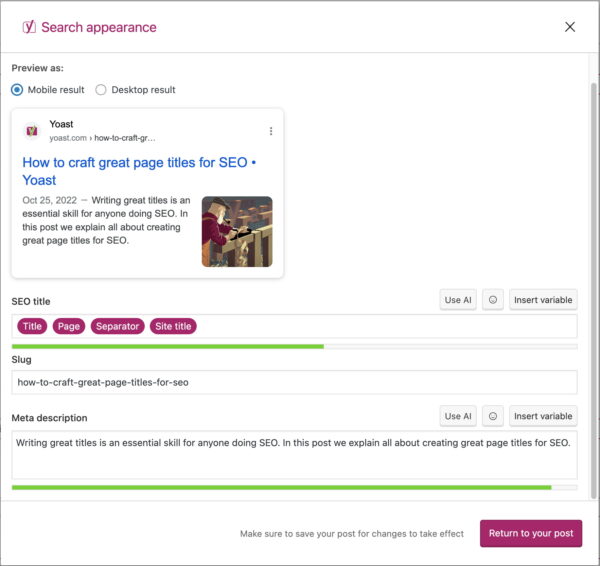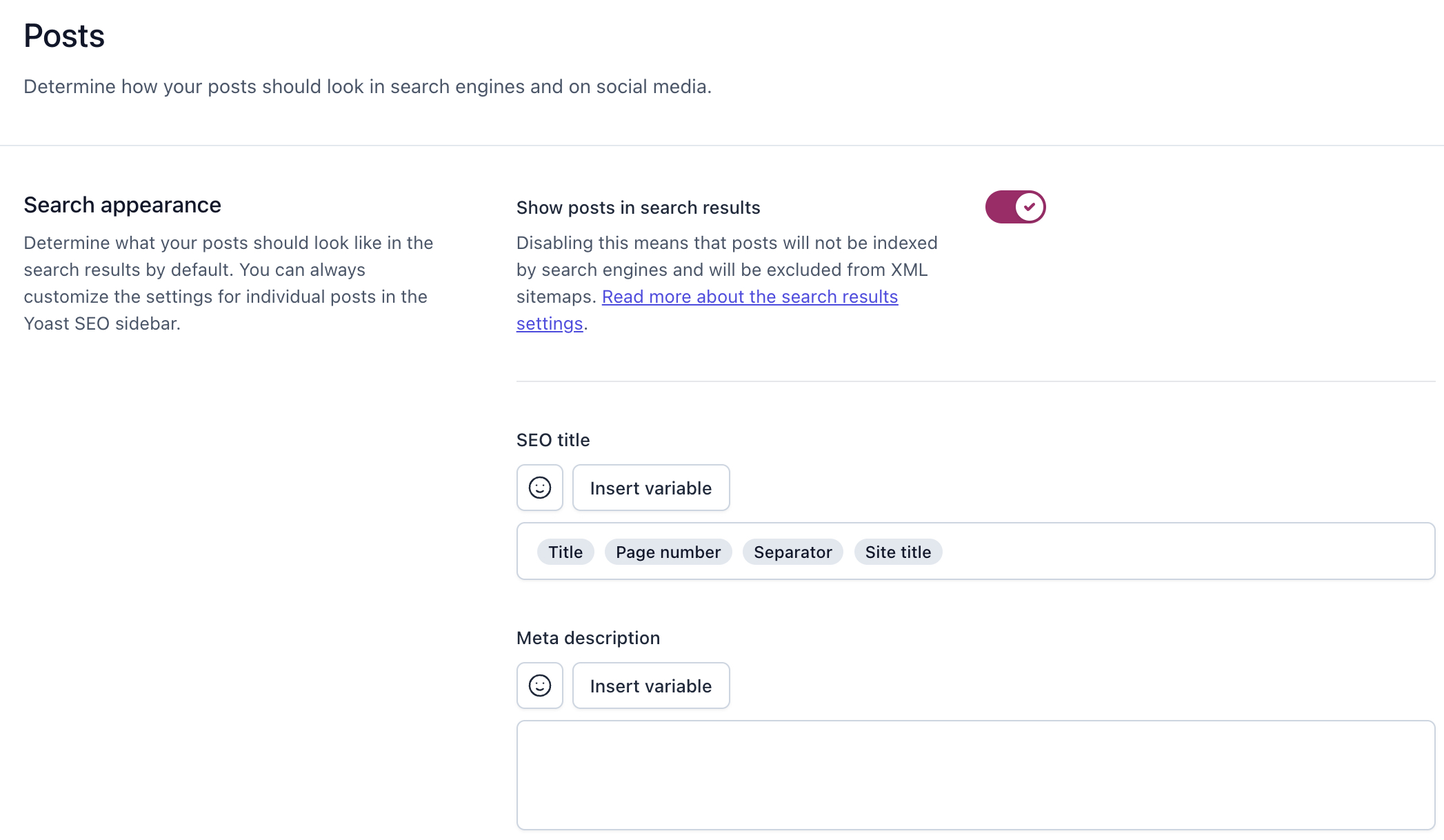What’s the difference between an H1 heading and the SEO title?

Writers tend to put some real thought into their titles. For online content, titles are important for both readers and search engines. That makes them double important! If you use WordPress and our Yoast SEO plugin, insert the post’s title in the post title input field. Your title will appear as an H1 heading on top of your post. But Yoast SEO also allows editing and improving your SEO title separately. Why is that? What’s the difference? And how can you edit it? I’ll explain in this post.
Two input fields
Let’s look at where to find the input fields for both titles. The input field for your post title – the same as your H1 heading – can be found on top of the page or post editor in WordPress.

You can find the input field for the SEO title in the Yoast SEO meta box, which appears underneath the post input field. Or, find it in the Yoast SEO sidebar. To edit this title, you need to click on the edit snippet button. The search appearance preview will then open. The search appearance preview offers you three input fields.
The first one is the input field to edit your SEO title. Beneath the input field, you’ll – hopefully – see a green bar. That’s to say, it will be green if this title is well-optimized. You should try to improve it if it’s orange or red. As you can see, the input field shows the various variables (in purple) it will use to create the eventual title that will show in the search engines.

Purpose of the post title and the SEO title
It is essential to realize that your SEO title has a different purpose than the title of your post or page (your H1 heading). Your post title is meant for people who are already on your site. It’s telling them what your post or page is about. Your SEO title, on the other hand, is meant for people who are not on your website yet. It will be shown to people in the search engines on the SERPs. It will be the title of your snippet in Google – that’s why it’s in the search appearance preview. The purpose is to make people click on the snippet, visit your website, read your post, or buy your product.
What does Yoast SEO automatically do?
Without doing anything, Yoast SEO will generate an SEO title based on the title of your post, the H1 heading. It will also put your site’s name in this title. Google will do this if you don’t (or our plugin doesn’t). Yoast SEO will ensure your title isn’t too long – you’ll get a notice if your title is too long. At Yoast, we use a small bullet to separate the post title from the site name, but you could also use a dash, for example.

You can set the way you want to generate your SEO title in the Search Appearance section of Yoast SEO. If you do that, all your post titles will be generated similarly. But, as described above, you can edit this title separately for a post, if you like. In the next paragraph, we’ll explain in which cases you’d like to do that.
Should you edit the SEO title?
Personally, I never edit the SEO title of a separate post. I write a post and choose a title suitable for people already on our site and people who see the snippet in the search engines. The settings to automatically generate titles in our Yoast SEO install are – of course – fine.
If I want to adapt my title, maybe because I forgot to use the focus keyword in the title of my post, I always alter the post’s title. The SEO title will change along with that. For posts like this, this works fine. However, if you sell a product, the post or page title might not be the best title to adopt. Perhaps you would like to mention the product’s price in your SEO title, but not in the H1 of your page. In these cases, editing this title is necessary.
How do you edit the SEO title?
The title template
As described above, Yoast SEO automatically generates SEO titles for you. It uses snippet variables (in purple) to do so. You can adapt this title template to your liking in the Search Appearance section of Yoast SEO. Go to the tab ‘Content Types’ and scroll to the content type you’d like to change the title template for, for instance, posts. You can use the plus on the right side to select which variables you’d like to use:

You can find all about setting these snippet variables in Edwin’s post. For an overview of all the snippet variables, you can check our knowledge base.
For a separate post
If you’re working on a post and want to change the SEO title, click on it in the Yoast SEO meta box beneath your post or the sidebar. You can write an exclusive text for it using certain snippet variables or a combination of both. For example, if you want to amend the first part of the title but keep the separator and the site name, you can create a title like: ‘[customized post title] – Separator – Site title’.
Conclusion
Your SEO title and your post title both serve a different purpose. In many cases, however, you can use your post title as the base for your SEO title. Yoast SEO will generate a nice title based on your post title. In some cases, you’re better off customizing the SEO title. You can use the snippet variables to create an awesome title that will be shown in the search engines.
Read more: Crafting a good page title for SEO »

